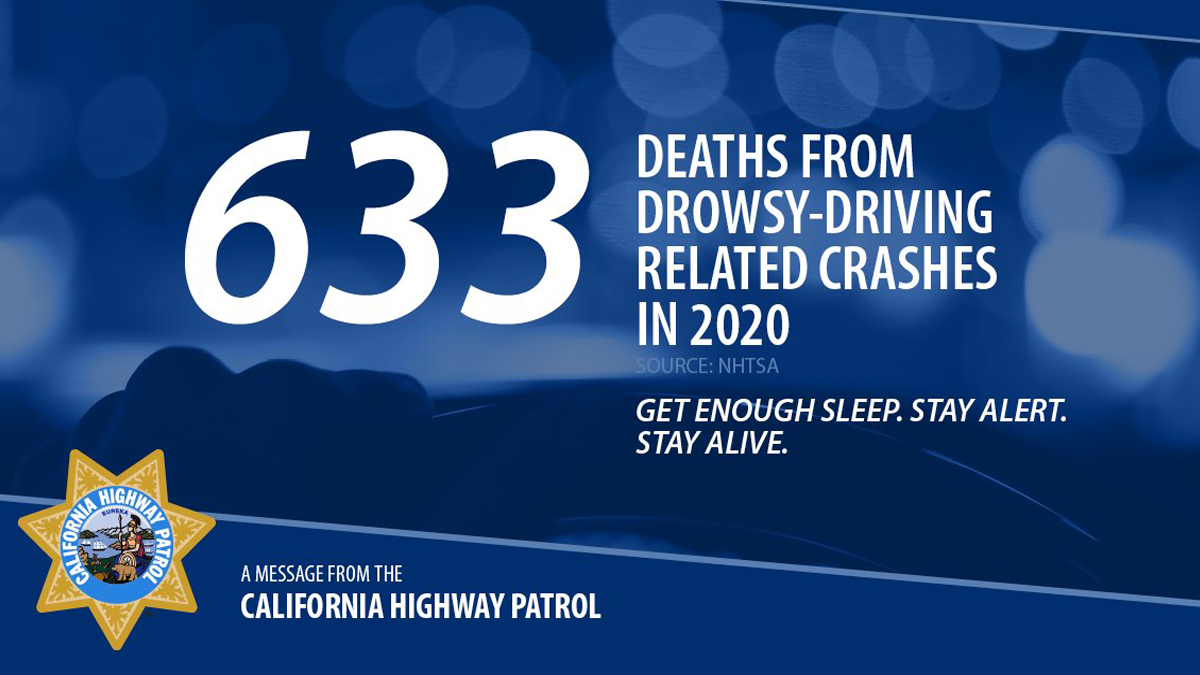Get at least 7 hours of sleep each night, stick to a consistent sleep schedule, and avoid alcohol and/or medication that can cause drowsiness.
The National Highway Traffic Safety Administration (NHTSA) estimates that drowsy driving led to 633 deaths in 2020 and reported 11,654alcohol-impaired-driving fatalities in 2020/
Some suggested tips to avoid drowsy driving include:
- Getting enough sleep before driving.
- Driving with a passenger and switching drivers before you start to feel drowsy.
- Taking regular rest stops even if you are not tired.
- Avoiding alcohol or medications that can cause drowsiness.
- Stay alert and drive without distraction not only to protect yourself, but to protect your passengers and other motorists.
If you feel fatigued while driving on California’s roadways, motorists are encouraged to take advantage of the more than 80 safety roadside rest areas maintained by the California Department of Transportation (Caltrans) throughout the state. To find a rest area or to check for the latest travel information on state highways, visit Caltrans’ QuickMap at http://quickmap.dot.ca.gov/. Or just pull over to a safe spot off the roadway, like a parking lot to get some rest.
There are more ways to follow the Pain In The Pass. Join the Traffic Group on Facebook with over 116,000 members. Join the NEW group on MeWe. Like us on Facebook. Follow us on Twitter and Instagram.

